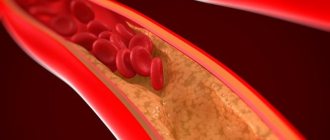What is arterial hypertension?
Arterial hypertension (AH) is an increase in blood pressure above 140/90 mmHg. A synonym for arterial hypertension is hypertension. If it is not possible to find out the reason why there is an increase in blood pressure, arterial hypertension is called primary hypertension. The following conditions lead to the development of secondary hypertension: - kidney disease (inflammation, hydronephrosis, renal artery stenosis, nephroptosis), endocrine diseases (pheochromocytoma, acromegaly, hypothyroidism).
Secondary hypertension during pregnancy
Secondary hypertension can occur during pregnancy, be caused by neurological disorders, caused by certain medications, and develop with alcohol abuse. There are factors, the combination of which causes a high risk of developing hypertension. This is a hereditary factor: if the mother or father in the family suffers from high blood pressure, there is a high risk that the child will be hypertensive in the future, as well as age: with age, the number of patients with hypertension increases.
According to some statistical studies, hypertension is observed in every second person over 65 years of age. But there is a special form of hypertension that develops rapidly and is very difficult - malignant, unlike other forms, this form affects mainly young men. Environmental factors also play a major role in the development of hypertension: excessive salt intake, smoking, alcohol, obesity, low physical activity, stressful situations, postmenopause.
1. Diagnosis of high blood pressure
Diagnosis of high blood pressure, or hypertension, involves taking a medical history and directly examining the patient. Your doctor's specific questions and tests will depend on how high your blood pressure is and whether you have other risk factors for heart disease. Some patients may require more detailed diagnostic testing or even a comprehensive cardiac evaluation.
To diagnose hypertension, your doctor may:
- Ask about your family history of hypertension, assess risk factors for high blood pressure - for example, heredity or smoking.
- Measure your blood pressure two or more times. Measurements can be taken on the left or right arm, on the leg and, for example, in different positions - sitting, lying or standing. This will help you get a more accurate idea of your blood pressure.
- Measure your weight, height and waist circumference.
- Check the retina and the condition of the back of the eye.
- Check your heart function (at a minimum, listen to the rhythms).
- Examine the abdomen with a stethoscope. Listening to the vessels in the abdomen will help you hear abnormal sounds, which may be caused by obstruction of blood flow due to a narrowing of the artery in the abdomen.
- Examine the neck to detect an enlarged thyroid gland, distension of the jugular veins and carotid artery.
A must read! Help with treatment and hospitalization!
Why is high blood pressure dangerous?
Target organs
Such close attention paid to this disease is explained by the fact that with this disease the risk of complications increases: heart attacks, strokes, which significantly reduce life expectancy. There are organs in the body that are directly affected by high blood pressure to a greater extent. These organs are called target organs. These are the heart, blood vessels of the eyes, brain and kidneys.
Diagnosis of hypertension includes mandatory diagnosis of these organs. Hypertension is also dangerous because it develops gradually and does not manifest itself at all at first. The patient does not even know that he has high blood pressure, since nothing bothers him; the body’s compensatory capabilities neutralize the symptoms. Complaints appear only when target organs are affected.
This is either a high degree of hypertension or a crisis course of hypertension. Also, patients, even knowing that they have high blood pressure, often do not pay due attention to this and let the disease take its course. What you absolutely cannot do. Even with a one-time increase in blood pressure, you need to control your blood pressure and be able to determine it yourself.
Method for determining pressure
Rules for measuring blood pressure with a mechanical tonometer
The main available and widespread method for diagnosing hypertension is the correct measurement of pressure. Blood pressure is measured under conditions of complete rest, both mental and physical, at room temperature. 1-2 hours before the start of the procedure, it is not advisable to drink coffee, smoke, drink large amounts of liquid and food, or perform physical activity of varying intensity. Blood pressure is measured while sitting, lying down, and sometimes standing.
When checking blood pressure while sitting, the patient's back should rest against the back of the chair, legs should be on the floor, not crossed, and the patient's arm should rest freely on the table at chest level. The tonometer cuff is placed on the arm freed from clothing. Measuring over clothing distorts blood pressure numbers. The middle of the cuff should be located at the level of the patient’s heart; if the cuff is located lower, the blood pressure will be distorted, more often it will be overestimated; if it is higher than the level of the heart, the blood pressure will be underestimated.
The bottom of the cuff, when applied correctly, is 2.5 cm above the bend of the elbow. The stethoscope should firmly touch (but not press!) the inner bend of the elbow, where the brachial artery pulsates most pronouncedly. The first tone heard by the ear and visible on the scale is called systolic pressure (SBP), the moment when the final clear tone disappears - diastolic blood pressure (DBP).
At your first visit to the doctor, you should measure blood pressure in both arms. Subsequently - on the arm, where blood pressure is higher. The difference in blood pressure in the arms can be 5-10 mmHg, but it can be more due to the anatomical features of the arteries. It is advisable to measure blood pressure twice with an interval of at least two minutes. You need to focus on the average value of measurements on one hand.
About the disease / Symptoms and diagnosis| Symptoms |
| Measuring blood pressure at home |
| Diagnosis of hypertension in the doctor's office |
| How is the diagnosis made? |
Symptoms
Unpleasant sensations associated with increased blood pressure - tinnitus, headaches and other symptoms of incipient hypertension - largely coincide with the signs of ordinary fatigue.
Most patients, noting a deterioration in their health and unsuccessfully trying to fight it in various ways, do not even think about their blood pressure, and also do not imagine the real scale of the danger - the numerous complications of hypertension.
That's why doctors call hypertension the “invisible killer” - too often the patient is diagnosed by emergency doctors or resuscitators. But high blood pressure does not require complex diagnostics; it can be detected during a routine preventive examination and, if treatment is started on time, can be corrected in most patients.
Test yourself. If you experience the following symptoms
, a hidden course of hypertension cannot be ruled out:
- headache;
- dizziness;
- weak, rapid heartbeat (tachycardia);
- sweating;
- facial redness;
- sensation of pulsation in the head;
- chills;
- anxiety;
- memory impairment;
- internal tension;
- irritability;
- decreased performance;
- spots before the eyes;
- swelling of the eyelids and puffiness of the face in the morning;
- swelling of the hands and numbness of the fingers.
Perhaps the listed ailments do not bother you constantly, but from time to time, and after rest they completely recede for some time. Unfortunately, this is not yet a reason for optimism, but only a manifestation of the special insidiousness of hypertension.
If you do not adjust your lifestyle and do not start treatment, the disease will progress, wearing out the heart, causing severe and irreversible damage to target organs: the brain, kidneys, blood vessels, fundus.
In the later stages of the disease, all of these symptoms intensify and become permanent. In addition, memory and intelligence are significantly reduced, coordination is impaired, gait changes, sensitivity decreases, weakness appears in the arms and legs, and vision deteriorates.
In order not to expose your health and life to unjustified risk, if you have at least a few symptoms and, especially, risk factors for hypertension, you should regularly measure your blood pressure and, if it increases, consult a doctor as soon as possible.
Measuring blood pressure at home
If there are or have been patients with cardiovascular diseases in your family, if you are over forty years old, if there are other risk factors, or you have already observed symptoms of incipient hypertension, your blood pressure should be measured daily.
At home, tonometers with a phonendoscope or more modern electronic devices are used. Working with a phonendoscope is a little more difficult - not everyone can immediately catch the sounds of pulsation. In this case, you just need to practice a little, maybe on other family members.
Before measuring pressure, you need to prepare the tonometer for use - align the tonometer needle with the zero mark on the scale.
Before measuring your blood pressure, you should not drink coffee, smoke, or drink alcohol. It is advisable to sit quietly for a few minutes, leaning back in a chair.
Blood pressure is measured while sitting. The forearm (from elbow to hand) of the right hand rests freely on the table. The cuff is attached slightly above the elbow, where the pulse is felt most strongly.
The ring at the top of the rubber bulb must be tightened so that air flows only into the cuff.
Having put on the phonendoscope and pressing its head to the elbow cavity, we begin to pump air into the cuff using a rubber bulb. When the arrow reaches the “200” mark, you need to begin to smoothly release the ring so that the air gradually leaves the cuff. The arrow will creep down, and at this time you will hear a pulsating sound, which then disappears again.
The number where the tonometer needle will be at the moment the pulse sounds appear is an indicator of the upper (systolic) pressure, and the number where the sounds disappear shows the lower (diastolic) blood pressure.
Normal blood pressure numbers:
| Age (years) | Blood pressure (mm Hg) | |
| 16-20 | 100/70 — 120/80 | |
| 20-40 | 120/70 — 130/80 | |
| 40-60 | up to 135/85 | |
| Over 60 | up to 140/90 |
If your blood pressure stays at 140/90 or higher for several days in a row, this is certainly a reason to visit a doctor. Do not hesitate to go to the clinic, even if you have no other complaints except the tonometer readings. If your doctor is a qualified specialist, then he knows that treatment of hypertension should begin at the earliest stage.
Diagnosis of hypertension in the doctor's office
The most accurate apparatus for clinical measurement of blood pressure is a mercury sphygmomanometer with a stethoscope. It is, however, rarely used today due to its size, difficulty of transportation and potential environmental hazards. Aneroid (inflatable and lever type) and automatic devices are more often used.
There are also ambulatory blood measuring machines that record blood pressure over a 24-hour period.
Ambulatory blood pressure measurement must meet the following criteria:
- 5 minutes before the measurement, the patient sits quietly on a chair, leaning back, hands at heart level;
- thirty minutes before measuring blood pressure, the patient stops smoking and drinking coffee;
- the size of the cuff should correspond to the size of the hand and it should not be too loose or tight;
- the cuff is placed on the right arm 20 cm above the elbow (if there are no contraindications such as breast surgery, bypass surgery, etc.);
- cuff inflation should be 30 mmHg above the vanishing point of the pulse;
- the pressure in the cuff should not fall faster than 2 mmHg per second;
- take into account phase V (disappearance of pulsation), and not phase IV (muffling);
- on average, two measurements should be practiced, separated by a two-minute interval;
- repeated measurements should be carried out at the same time of day;
- If the patient is receiving medication, the time of the last dose should be recorded.
Blood pressure readings obtained in a doctor's office are often higher than measurements taken at home.
Your doctor may recommend that you measure your blood pressure at home every day and record the data in a diary. In this case, it is good to bring your device to the clinic to correct the possible error caused by the difference in the readings of the two devices.
How is the diagnosis made?
In each case of detection of elevated blood pressure, the doctor will have to determine:
- stability of pressure rise,
- the presence and degree of pathological changes in internal organs, primarily the heart, brain, kidneys;
- establish the cause of the increase in pressure.
To do this, at least three additional blood pressure measurements are usually taken over several weeks. Laboratory tests are required to identify risk factors for other cardiovascular diseases, determine the degree of target organ damage, and diagnose possible secondary (symptomatic) hypertension.
To establish the possible causes of increased blood pressure, if possible, conduct a full in-depth examination to exclude symptomatic hypertension, especially in young and middle-aged people.
Patients with malignant hypertension or suspected secondary hypertension are referred to an internal medicine specialist or nephrologist for more thorough evaluation.
Middle-aged patients who are diagnosed with hypertension during a preventive examination can, in most cases, be diagnosed using methods available in the clinic, and in people over 40 years of age, the overwhelming majority of the cause of increased blood pressure is hypertension.
Thus, the minimum laboratory examination for diagnosing hypertension includes:
- urine test for protein and glucose,
- blood test for hemoglobin or hematocrit,
- determination of creatinine or urine blood nitrogen levels;
- glucose level during fasting;
- electrocardiogram.
Depending on the results and medical history, the following tests may also be performed:
- total cholesterol;
- high-density cholesterol;
- triglycerides during fasting;
- chest x-ray;
- serum calcium;
- phosphates and uric acid.
| Details |
| Classification |
| Risk factors and prevention |
| Treatment and prognosis |
| How to live with hypertension |
Patient screening program for hypertension
Taking anamnesis from the patient
Diagnosis of arterial hypertension poses the following tasks:
- confirm the presence of hypertension, determine its degree;
- identify risk factors for arterial hypertension;
- determine the primary or secondary origin of hypertension, conduct differential diagnosis;
- identify whether there is damage to target organs.
Before proceeding with the diagnosis, the doctor must collect as accurately as possible an anamnesis from a patient with a presumed diagnosis of arterial hypertension: have there been any cases of hypertension, early development of heart disease, diabetes mellitus, heart attacks in close relatives, find out whether the patient has chronic diseases, whether he is taking medications.
Body mass index
The doctor must assess the patient’s lifestyle: nutrition, physical activity, bad habits, type of work, personal qualities of the patient’s character. A general examination by a doctor includes determining height, weight, and body mass index (BMI). BMI is the ratio of body weight in kilograms to height in meters squared. A normal BMI is from 18.5 to 25. A BMI over 25 indicates excess body weight as one of the risk factors for hypertension.
After a general examination, the doctor measures blood pressure according to the above rules. But, unfortunately, in real outpatient settings, blood pressure measurements on both arms are not carried out twice due to lack of time. Therefore, to determine the degree of arterial hypertension, the doctor must give the patient “homework” - complete a blood pressure profile.
A blood pressure profile is a patient's self-measurement of blood pressure, at home, at least 4 times a day (twice in the morning and twice in the evening) at least 3 days a week. The measurement results should be recorded on paper and provided to the doctor at the next visit. Measuring blood pressure at home makes it possible to differentiate between true hypertension and “white coat” hypertension, when the patient’s blood pressure rises from anxiety in a hospital setting when seeing a doctor.
High pressure
If the profile pressure numbers are above 140/90 mmHg. - this indicates stable arterial hypertension and the need for treatment. If a patient with suspected hypertension has normal self-measurement blood pressure, 24-hour blood pressure monitoring (ABPM) should be performed to confirm or rule out the diagnosis of hypertension.
ABPM is repeated measurement of blood pressure over a 24-hour period. In an outpatient setting, the patient is put on a portable recorder that runs on rechargeable batteries. The patient goes home and leads his daily life in a familiar environment.
During blood pressure monitoring, the patient keeps a diary in which he records physical and mental stress, emotional outbursts, changes in well-being throughout the day, time of taking medications, time of awakening and sleep. The diary data is provided to the doctor and the ABPM readings are assessed. 24-hour monitoring has a clear advantage over a single blood pressure measurement and allows a more accurate diagnosis to be made.
Causes and types of illness
Finding out the causes of hypertension is difficult. To determine it, 3 stages of examination are needed.
Enter your pressure
Move the sliders
120
on
80
Many people complain of hypertension. There are 2 types of hypertension - primary and secondary. Provocateurs of primary hypertension can be the environmental conditions in which a person lives, his diet, alcohol consumption and smoking, obesity, stressful situations, etc. Those who have a history of hypertension in their family have a genetic predisposition. Secondary hypertension develops against the background of chronic organ diseases that affect blood pressure indicators - diseases of the kidneys, nervous and endocrine systems, and everything related to the circulatory system.
The nature of the development of 2 forms of hypertension is described in table form:
| Types of disease | Stages | Features of the flow |
| Primary hypertension | 1 | Hyperadrenergic hypertension is characterized by tachycardia, pulsation in the head, chills, and tension. |
| 2 | Hyperrenin hypertension is characterized by a decrease in the daily dose of urine and swelling. | |
| 3 | Malignant hypertension is characterized by sudden surges in pressure, which lead to loss of vision and pulmonary edema. | |
| Secondary hypertension | 1 | Renal hypertension is caused by abnormalities in the functioning of the kidneys. |
| 2 | Nephrogenic hypertension arises from disease of the renal parenchyma. | |
| 3 | Blood diseases - hypertension occurs from problems with the blood. | |
| 4 | Drug hypertension occurs from taking medications. | |
| 5 | Endocrine hypertension appears as a consequence of diseases of the endocrine system. | |
| 6 | Cardiovascular hypertension is caused by diseases of the circulatory system. |
Diagnosis of target organs in hypertension
Fundus examination
In order to establish the origin of hypertension, as well as to determine the degree of target organ damage, the following studies are carried out:
- To clarify the condition of the kidneys and exclude renal causes of hypertension: general urinalysis, urine according to Nichiporenko and Zimnitsky, Rehberg test, ultrasound of the kidneys, radioisotope renography.
- Heart examination: ECG - on the cardiogram there is an increase in the R wave in leads V5, V6, I, aVL, ST segment moves slightly downwards. EchoCG, during which there are signs of left ventricular enlargement or other manifestations of heart damage due to high load on the vessels and chambers.
- Examination of the fundus - with hypertension, the vessels are too tortuous, compacted, and hemorrhages in the retina are possible.
- Ultrasound of the adrenal glands and thyroid gland.
- General blood test, blood biochemistry (determination of urea, creatinine, uric acid, electrolytes, cholesterol, aminotransferases, glucose, bilirubin).
These methods help establish the diagnosis of arterial hypertension, find out its origin, the severity of hypertension and determine the treatment of this disease. The sooner the diagnosis is made and treatment is prescribed, the less likely it is to develop complications of hypertension.
If, while measuring your blood pressure, you find that your numbers are high, or the doctor told you about this during a medical examination, do not delay with a full examination and follow all the recommendations of your doctor. Remember that nothing is more important than your health!
Lab tests
Laboratory tests for hypertension are divided into groups depending on their importance:
- Routine tests (done in all patients with high blood pressure):
- determination of hemoglobin level (this indicator decreases with anemia);
- hematocrit analysis (ratio of formed elements to blood plasma, density assessment);
- fasting blood glucose (helps determine diabetes mellitus, since it, along with hypertension and obesity, is included in the metabolic syndrome - a group of diseases that often occur in the same patients);
- lipid profile (total cholesterol, triglycerides, high and low density lipoprotein cholesterol) – to assess the risk of developing atherosclerosis;
- blood sodium and potassium (electrolyte imbalance is a manifestation of the secondary genesis of the disease);
- creatinine and uric acid of blood plasma (in addition, the filtration rate of the nephron glomeruli is calculated using the formula) - helps to assess the function of the kidneys, the target organ; in case of hypertensive crisis and a sharp deterioration in urine output, it is carried out urgently; these indicators increase with glomerulonephritis and a secondary increase in blood pressure;
- urine analysis with sediment microscopy, it is possible to use test strips to determine protein (microalbuminuria is the first symptom of renal dysfunction).
- Tests that are performed only when necessary:
- glycated hemoglobin is an indicator of chronic hyperglycemia, needed for diabetes mellitus or fasting glucose levels above 5.6 mmol/l;
- the amount of protein in daily urine (if microalbuminuria is detected).
Other studies are also prescribed (tests to assess the activity of pituitary hormones), especially in case of illness - the cause of high blood pressure or differential diagnosis of arterial hypertension.
Read more about tests for hypertension here.











